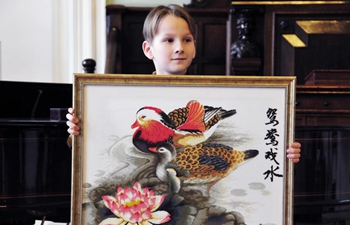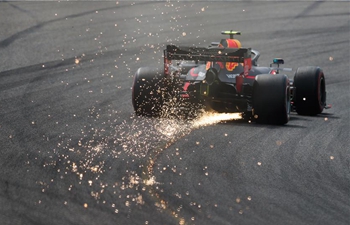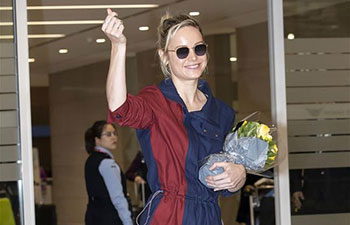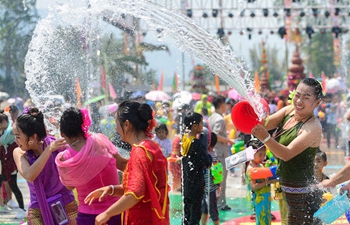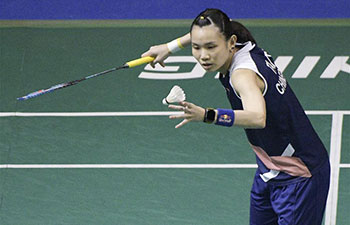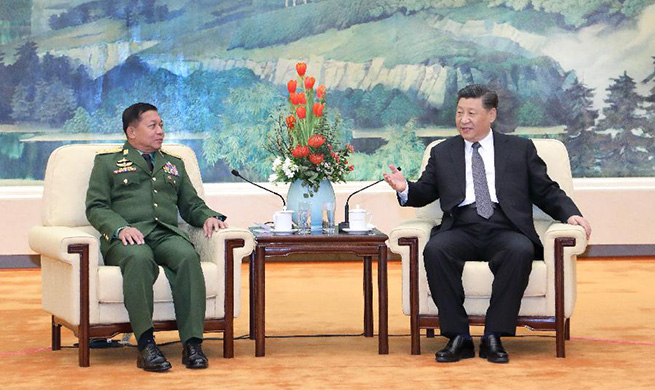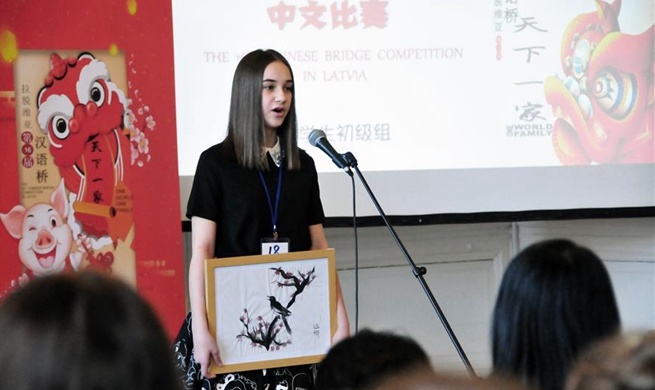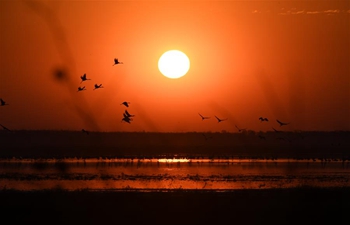CHANGCHUN, April 13 (Xinhua) -- Satellites, drones and pest-detecting cameras are making their way into rice paddies in China's major farming province as the country modernizes its agriculture, experts said.
A satellite can produce images of a 200 square km field in just half an hour and offer information such as growth, yield and seedling emergence rate of the crops, said Qu Chunlai, with Changguang Satellite Technology Co. Ltd.
The company's Jilin-1 satellite are widely applied in agriculture and forestry in northeast China's Jilin Province.
"The remote sensing satellite captures images of the vegetation and forms data according to the proportion of different wavelengths of light the plants reflect," Qu said.
So far, several counties in the province have set up zones piloting the method.
The changing faming methods in the small counties in China's rice powerhouse underline the marriage of cutting-edge technology and traditional farming powered by efforts of both private and public sectors.
Apart from companies like Changguang, local scientific research institutes are joining the race to digitalize farming.
A whirring drone carrying a camera flew over fields in the city of Gongzhuling in Jilin. Unlike normal cameras, the one mounted on the drone gathers data.
Called a multispectral camera, the camera weighs just 190 g. It is connected to software and shares data on crop growth, as well as disease and pest conditions.
In the past, farmers mainly relied on experience to understand the growth of crops by observing their colors.
"The method may not be precise, and the camera offers a more direct way," said Zhang Junqiang, developer of the camera and associate researcher at the Changchun Institute of Optical Precision Machinery and Physics of the Chinese Academy of Sciences (CAS).
The software can even offer farmers prescriptions for pest control based on data gathered on the camera, Zhang said.
Like Zhang, scientists have also been developing a series of agricultural monitoring methods in the Northeast Institute of Geography and Agro-ecology of CAS.
Liu Huanjun, a researcher at the institute, said that farmers can dynamically monitor soil and crop conditions as well as the yield, on their phones, and get customized guidance through technolgy developed by the institute.
"With the wide application of technology, more farmers are liberating themselves from toil," Liu said. "Smart agriculture is gradually taking root in the fields."




